Contents
Guide

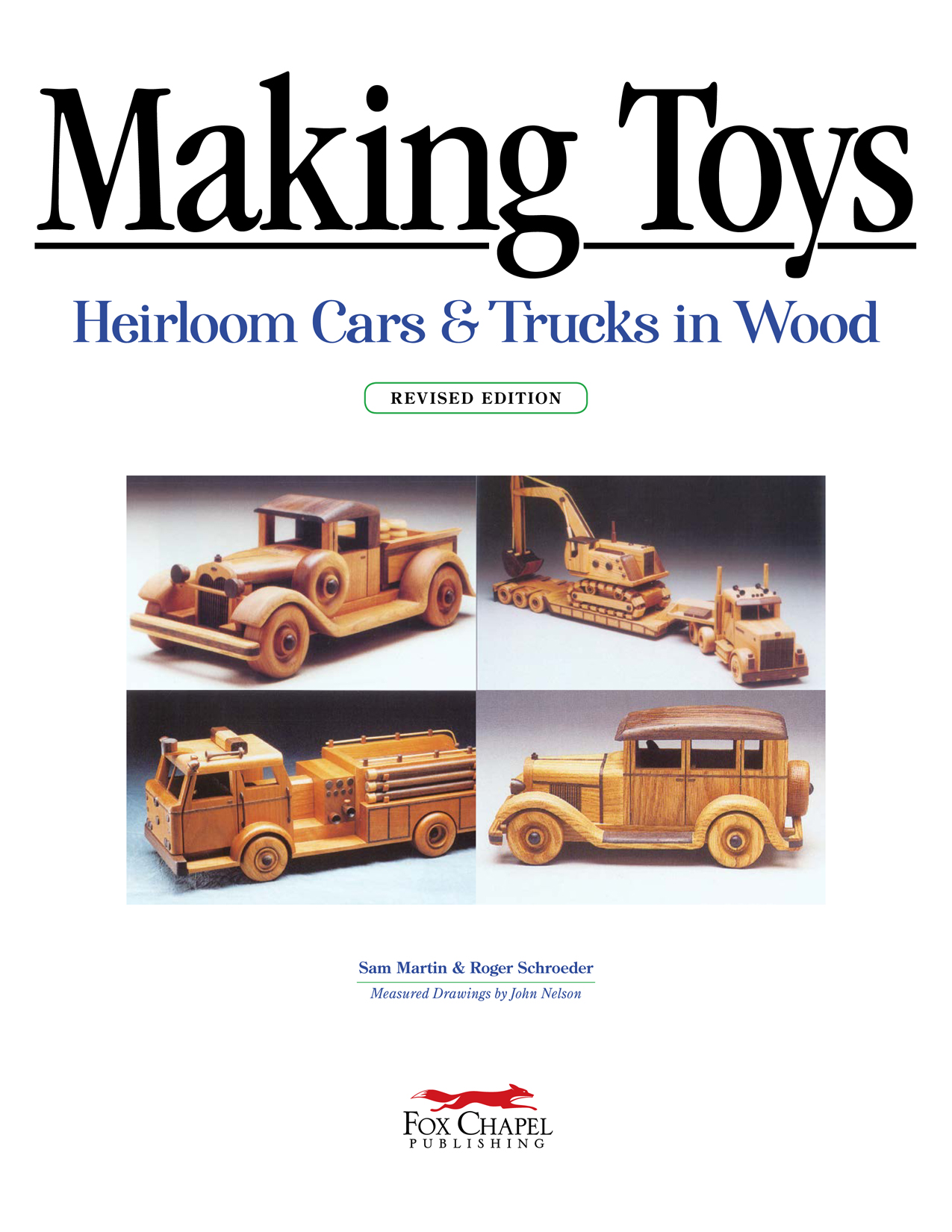

DEDICATION Dedicated to our wives, Georgia Martin and Sheila Schroeder, for their love and support; and to our publisher, who made this project possible

1998, 2020 by Sam Martin, Roger Schroeder, and Fox Chapel Publishing Company, Inc., 903 Square Street, Mount Joy, PA 17552.
Making Toys, Revised Edition (ISBN 978-1-4971-0116-6, 2020) is a revised edition of
Making Toys (ISBN 978-1-56523-079-8, 1998), published by Fox Chapel Publishing Company, Inc. Revisions include layout updates and minor editorial changes. The patterns contained herein are copyrighted by the author. Readers may make copies of these patterns for personal use. The patterns themselves, however, are not to be duplicated for resale or distribution under any circumstances.
Any such copying is a violation of copyright law. For a printable PDF of the patterns used in this book, please contact Fox Chapel Publishing at , quoting the ISBN and title of this book, as well as the pattern or patterns required. The following images are credited to , kamon_saejueng. Print ISBN 978-1-4971-0116-6
eISBN 978-1-6076-5835-1 To learn more about the other great books from Fox Chapel Publishing, or to find a retailer near you, call toll-free 800-457-9112 or visit us at www.FoxChapelPublishing.com. We are always looking for talented authors.
INTRODUCTION
Sam Martins reproductions of trucks, vintage cars, locomotives, and earth movers captured my interest as soon as I lay eyes on their scaled details and smooth surfaces of contrasting woods.
INTRODUCTION
Sam Martins reproductions of trucks, vintage cars, locomotives, and earth movers captured my interest as soon as I lay eyes on their scaled details and smooth surfaces of contrasting woods.
I was impressed with the craftsmanship because, like Sam, I am a woodworker. It was soon after I met Sam that the collaboration for this book began in his workshop in Lancaster, Pennsylvania. Sams shop consists of a variety of tools for making toys. His cutting tools are a table saw, band saw, and radial arm saw. A jointer is available for truing an edge. He has a lathe for turning wood and a thickness planer for reducing the thickness of a board.
He uses a router table for putting curved profiles on wood and dadoes and rabbets into the lumber. His sanding equipment consists of stationary belt and disc sanders and an oscillating drum sander. And his hand tools are varied enough to move a project along quickly. All of these tools will make your job of reproducing Sams designs a pleasure, although you will be able to do without some and you may well have others that are more efficient. Sam does not choose fancy joinery to lock the components of his toys together. Most of the pieces are butted and glued.
Time has taught Sam that his carpenters glue is strong and stable and keeps the toys together even when they are played with vigorously. Nails are used only to secure lights, stacks, airhorns, and other cylinders to his cars and trucks. I was surprised, however, to find that Sam employs no plans or blueprints. Working from photographs, he experiments with proportions until he arrives at a scale with which he is comfortable. When he wants to fabricate more of the same toy, he takes measurements off one previously made. The toyswhich Sam began calling collectiblesdescribed on the following pages were all crafted in oak and walnut.
Other woodscherry, maple, mahoganycan easily be substituted. In fact, Sam often uses cherry to fashion some of his vehicles. It is our intent to present pictorially the making of a truck and trailer, allowing you to see how to make the parts and put them together. The primary wood is oak; the contrasting wood is walnut. The rest of the book is devoted to plans for a flatbed trailer that can be substituted for the enclosed trailer; a 1932 Buick with running boards, a spare tire, and passenger seats; and a Ford pickup dating to the 1930s. It was a great pleasure working with Sam for a week in the August of 1996.
I was impressed with his speed, his economy of movements, and, of course, the beautiful truck and trailer he produced. I hope you will be as inspired as I was to buy the wood necessary, turn on the power tools, and make toys that, I suspect, will last at least a lifetime and hopefully more. Roger Schroeder Amityville, New York 
CONTENTS
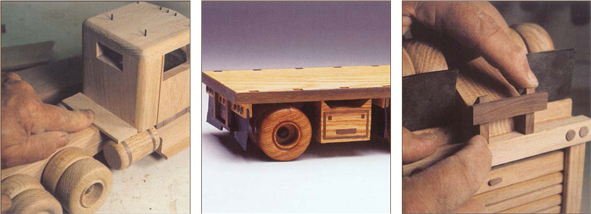
PROJECT GALLERY
Projects in the Book

This is the featured step-by-step project, the Peterbilt Truck. Patterns start .
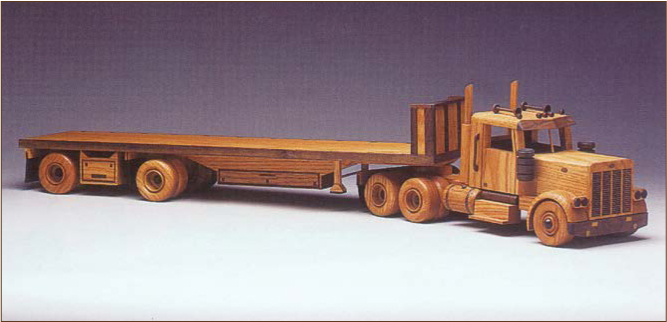
The Flatbed Trailer fits behind the Peterbilt Truck tractor. (Patterns and details starting .)
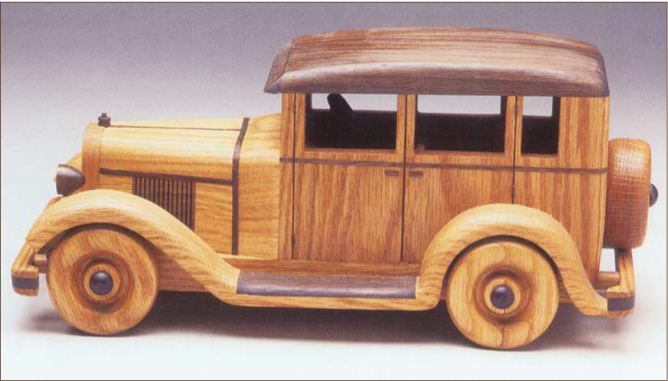
1932 Buick Sedan. (Patterns and details starting .)
Project Inspiration

This backhoe uses a series of springs to give an impressively realistic hydraulic system effect.
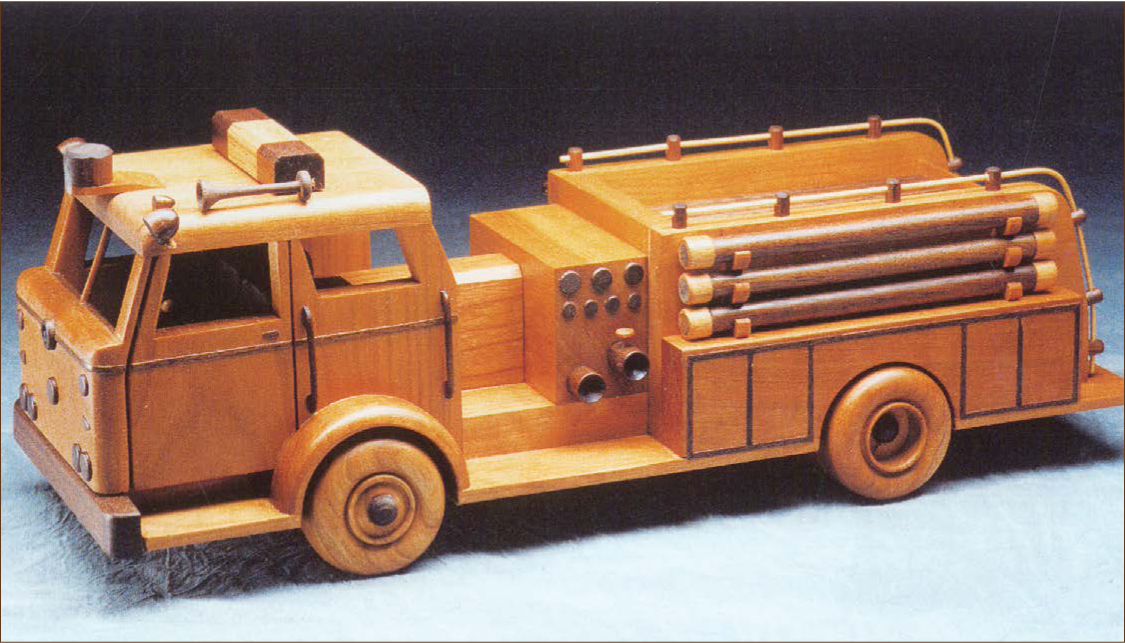
This pumper truck is impressive in either of Sam Martins favorite woodsoak or cherry

A hallmark of Sams toys is that every individual piece is made from wood, even down to the Mack emblem made of wooden veneer.
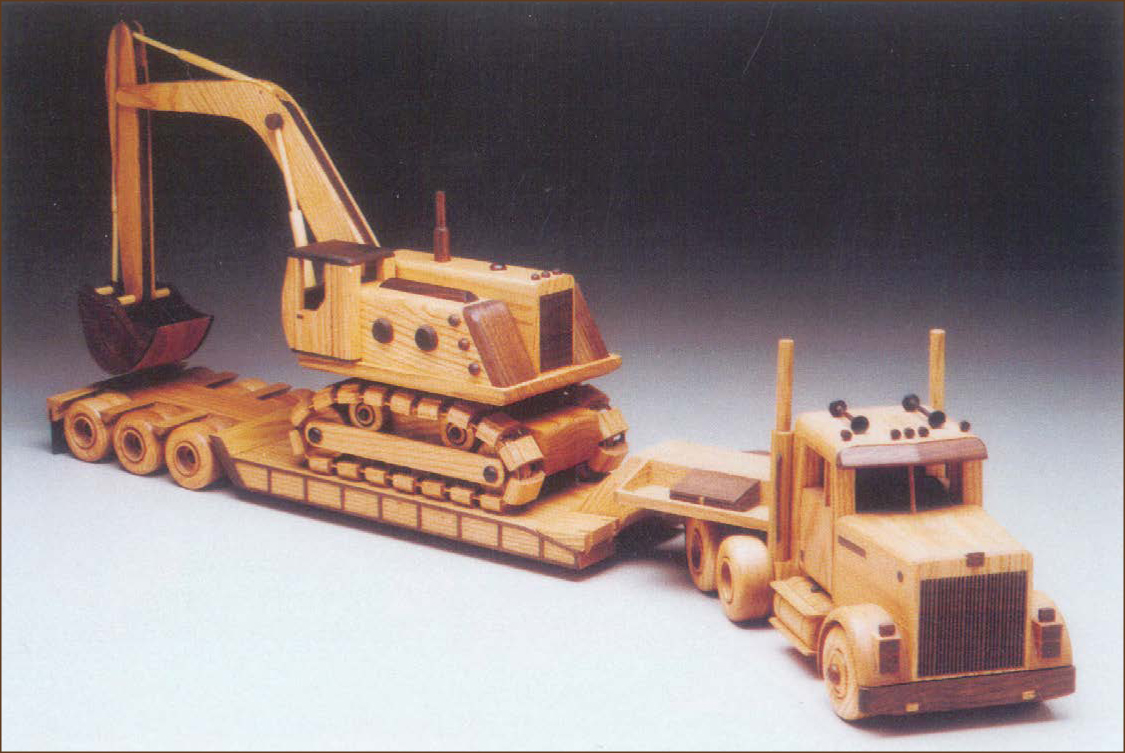
Measuring over 3 feet long, this rig of truck tractor, flatbed trailer, and track backhoe is an impressive sight on the mantle.

Measuring over 3 feet long, this rig of truck tractor, flatbed trailer, and track backhoe is an impressive sight on the mantle.
Using a unique rawhide system, the tracks actually work.  The boom and bucket move and pivot, the cab rotates, and the tracks function.
The boom and bucket move and pivot, the cab rotates, and the tracks function. 

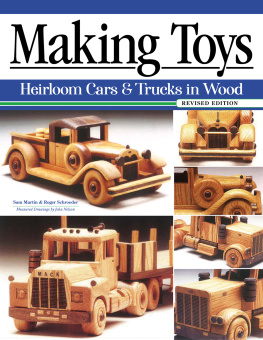

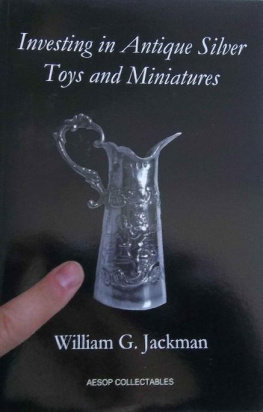


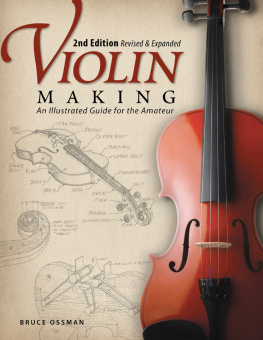

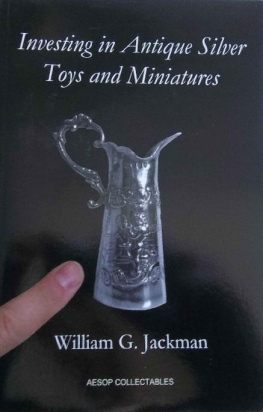
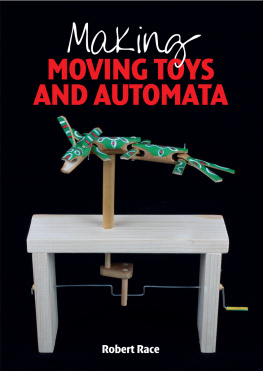




 DEDICATION Dedicated to our wives, Georgia Martin and Sheila Schroeder, for their love and support; and to our publisher, who made this project possible
DEDICATION Dedicated to our wives, Georgia Martin and Sheila Schroeder, for their love and support; and to our publisher, who made this project possible  1998, 2020 by Sam Martin, Roger Schroeder, and Fox Chapel Publishing Company, Inc., 903 Square Street, Mount Joy, PA 17552. Making Toys, Revised Edition (ISBN 978-1-4971-0116-6, 2020) is a revised edition of Making Toys (ISBN 978-1-56523-079-8, 1998), published by Fox Chapel Publishing Company, Inc. Revisions include layout updates and minor editorial changes. The patterns contained herein are copyrighted by the author. Readers may make copies of these patterns for personal use. The patterns themselves, however, are not to be duplicated for resale or distribution under any circumstances.
1998, 2020 by Sam Martin, Roger Schroeder, and Fox Chapel Publishing Company, Inc., 903 Square Street, Mount Joy, PA 17552. Making Toys, Revised Edition (ISBN 978-1-4971-0116-6, 2020) is a revised edition of Making Toys (ISBN 978-1-56523-079-8, 1998), published by Fox Chapel Publishing Company, Inc. Revisions include layout updates and minor editorial changes. The patterns contained herein are copyrighted by the author. Readers may make copies of these patterns for personal use. The patterns themselves, however, are not to be duplicated for resale or distribution under any circumstances. 

 This is the featured step-by-step project, the Peterbilt Truck. Patterns start .
This is the featured step-by-step project, the Peterbilt Truck. Patterns start .  The Flatbed Trailer fits behind the Peterbilt Truck tractor. (Patterns and details starting .)
The Flatbed Trailer fits behind the Peterbilt Truck tractor. (Patterns and details starting .)  1932 Buick Sedan. (Patterns and details starting .)
1932 Buick Sedan. (Patterns and details starting .)  This backhoe uses a series of springs to give an impressively realistic hydraulic system effect.
This backhoe uses a series of springs to give an impressively realistic hydraulic system effect.  This pumper truck is impressive in either of Sam Martins favorite woodsoak or cherry
This pumper truck is impressive in either of Sam Martins favorite woodsoak or cherry  A hallmark of Sams toys is that every individual piece is made from wood, even down to the Mack emblem made of wooden veneer.
A hallmark of Sams toys is that every individual piece is made from wood, even down to the Mack emblem made of wooden veneer.  Measuring over 3 feet long, this rig of truck tractor, flatbed trailer, and track backhoe is an impressive sight on the mantle.
Measuring over 3 feet long, this rig of truck tractor, flatbed trailer, and track backhoe is an impressive sight on the mantle.  The boom and bucket move and pivot, the cab rotates, and the tracks function.
The boom and bucket move and pivot, the cab rotates, and the tracks function. 